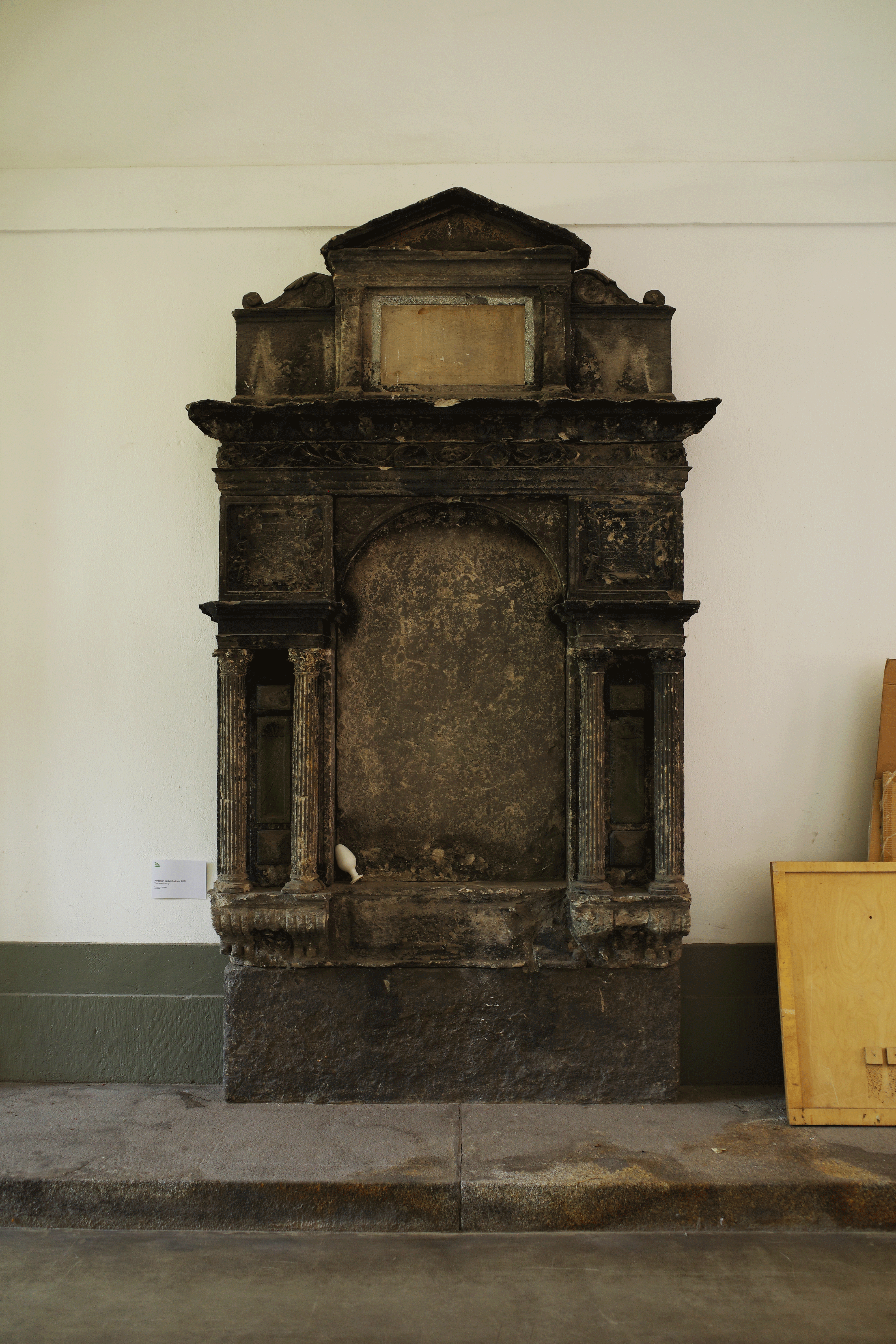Porzellan zerbricht doch
2021
site-specific installation
porcelain
6*6*15(cm)
Porcelain zerbricht doch is inspired by a found sentence written on the wall in the street of Vienna, called the Porzellangasse.
Artist has been researching the histories of ceramics around Europe since her study in Dresden. So-called ‘Porzellankrankheit’ and ‘White Gold’ are the terms that describe the phenomenon typically well, the obsession with the pure whiteness of the porcelain and how that reflects the mentality of the culture and society at the time.
This cultural ‘Geist(ghost)’ lives and exists further nowadays, even very worldwide, by the storytelling of the Western, as a legacy of invention, luxury, and winning.
By this winning, Saxony made not only itself famous by leading the first role in the cultural competition between Middle and West Europe at the time, but also a lot of wealth from the porcelain industry.
Artists’ journey between Saxony and Vienna underline the transfer of technology development of porcelain. And both Saxony and Vienna share not only the invention of western porcelain but also the war and nationalism.
As porcelain was considered the ‘perfect material’ to present the ‘white identity in Europe, a ceramic factory in Allach, Germany was taken over by the Nazi government to produce white symbolic figures, such as the ‘Arian’ male figure with a uniform, or on a horse, with a dog, etc.
As the other work Temple of Void reflects a dark history, this work refers to the ‘glorious invention’ of Saxony and Middle Europe.
In this work, the small egg-like figure is inspired by many forms found in European cultures, such as topiary. This figure is installed vulnerably leaning against the wall-installed altar, which is slightly hidden aside from the main courtyard. The fragile character of this installation is to make a contrast to the centerpiece in the courtyard.
Artist has been researching the histories of ceramics around Europe since her study in Dresden. So-called ‘Porzellankrankheit’ and ‘White Gold’ are the terms that describe the phenomenon typically well, the obsession with the pure whiteness of the porcelain and how that reflects the mentality of the culture and society at the time.
This cultural ‘Geist(ghost)’ lives and exists further nowadays, even very worldwide, by the storytelling of the Western, as a legacy of invention, luxury, and winning.
By this winning, Saxony made not only itself famous by leading the first role in the cultural competition between Middle and West Europe at the time, but also a lot of wealth from the porcelain industry.
Artists’ journey between Saxony and Vienna underline the transfer of technology development of porcelain. And both Saxony and Vienna share not only the invention of western porcelain but also the war and nationalism.
As porcelain was considered the ‘perfect material’ to present the ‘white identity in Europe, a ceramic factory in Allach, Germany was taken over by the Nazi government to produce white symbolic figures, such as the ‘Arian’ male figure with a uniform, or on a horse, with a dog, etc.
As the other work Temple of Void reflects a dark history, this work refers to the ‘glorious invention’ of Saxony and Middle Europe.
In this work, the small egg-like figure is inspired by many forms found in European cultures, such as topiary. This figure is installed vulnerably leaning against the wall-installed altar, which is slightly hidden aside from the main courtyard. The fragile character of this installation is to make a contrast to the centerpiece in the courtyard.

